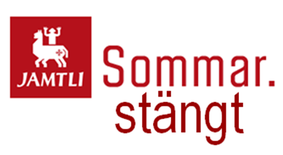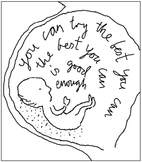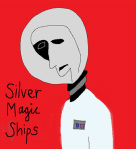
Zipsane must have been cursing those words as he announced the cancellation of Jamtli’s exhibition “Udda och jämt” (Odd and even). This was to have been a group show of contemporary Swedish art. Included in the line-up was Lars Vilks. He made a name for himself in 2007 with the publication of his drawings of the prophet Muhammad as a dog-shaped piece of street furniture.
This triggered a furious and at times very violent reaction in both Sweden and abroad. Vilks is now obliged to live under police protection and has become synonymous with the polarised views pertaining to religion and freedom of expression.
Whatever one’s opinion of Vilks, it is impossible to accuse him of hiding his views on such matters. This is confirmed by his much-publicised decision to travel to New York this month in order to take part in a conference entitled SION (Stop Islamization of Nations).
Nevertheless, it seems to have been this specific action that led Jamtli’s leadership to change their mind about including Vilks in “Udda och jämt”. Yet they clearly failed to think through the potential consequences of this move. One by one the other artists in the show announced their decision to withdraw. Eventually it became clear that not enough participants remained and so the exhibition, which was due to open on 30th September, has now been cancelled.
This incident touches on lots of highly sensitive issues and gives rise to a host of often strongly held opinions. Oddly enough it is this that appears to be the greatest problem. Earlier this morning a spokesperson for Jamtli appeared on Sweden’s national radio. She lamented that the debate that had arisen threatened to overshadow the art. If this is such a bad thing, why extend an initiation to a so-called conceptual artist like Lars Vilks in the first place?
Could it be that Jamtli hoped that Vilks’ presence might have added a touch of spice to the mix – a little of that “good publicity” so craved by Zipsane? If so, this has all gone horribly wrong.
Or has it?
“Udda och jämt” promises to be one of the most talked about shows in Jamtli’s history – whether it takes place or not. So why don’t its asinine leaders go ahead with the exhibition as arranged? The plans are no doubt well advanced; the text panels and labels for each artwork must be ready to be go. These could be mounted on the wall alongside works by those artists who still wish to participate. Meanwhile, large tracts of white space would indicate those works that have been censored by the institution or self-censored by the artists.
Each (non)participant plus other interested commentators could be invited along to the opening. They could enter into debate over what has occurred, why and with what consequences. Each of the artists selected to take part in “Udda och jämt” would be compelled to explain their decisions. Did they withdraw in protest against the museum’s censorship, in support of Lars Vilks or for some other reason?
One such protagonist is the painter, Karin Mamma Andersson. She is on record as criticising Jamtli’s belated and apparently arbitrary decision to ban Vilks. But, prior to that, she was presumably happy for one of her paintings to share a wall with a work by Vilks? Or was she unaware of his participation? Whichever was the case, what “Udda och jämt” reveals is the multivocality of artworks and the powerplays inherent in the artworld. Art and artists are constantly being reframed – by the media and by curators in museums. Art never “speaks for itself”. This has been confirmed by the Jamtli debacle. Yet, rather than capitalise on this rare opportunity to unpick the workings of the artworld, what does the museum do? Simply shuts its doors, withdraws from the fray and waits for normal service to resume.
The greatest losers here are Jamtli’s public.
Because if Jamtli’s leadership had the courage of their convictions and gone ahead with this non-show then something fascinating would have occurred: the audience itself would have taken centre stage. Regular museum-goers and first-time visitors alike could have voiced their opinions about this so-called public institution. Do they applaud or abhor the actions of the museum and the behaviour of the artists?
The resulting dialogue would provide a roadmap for future decisions and contribute to an opening-up – a democratisation – of the museum.
As it is, by cancelling “Udda och jämt” the likes of Henrik Zipsane have simply placed an embargo on proper debate. And it is this lack of informed discussion and argument that characterises the hysteria around religion and freedom of expression.
The only winners here are those people who delight in spreading discord and miscommunication plus those misguided individuals and organisations who insist on separating “art” from life.
___
Note
(1) “Jamtli ställer in utställning”, Svenska Dagbladet, 29/08/2012, http://www.svd.se/kultur/jamtli-staller-in-utstallning_7458194.svd.






